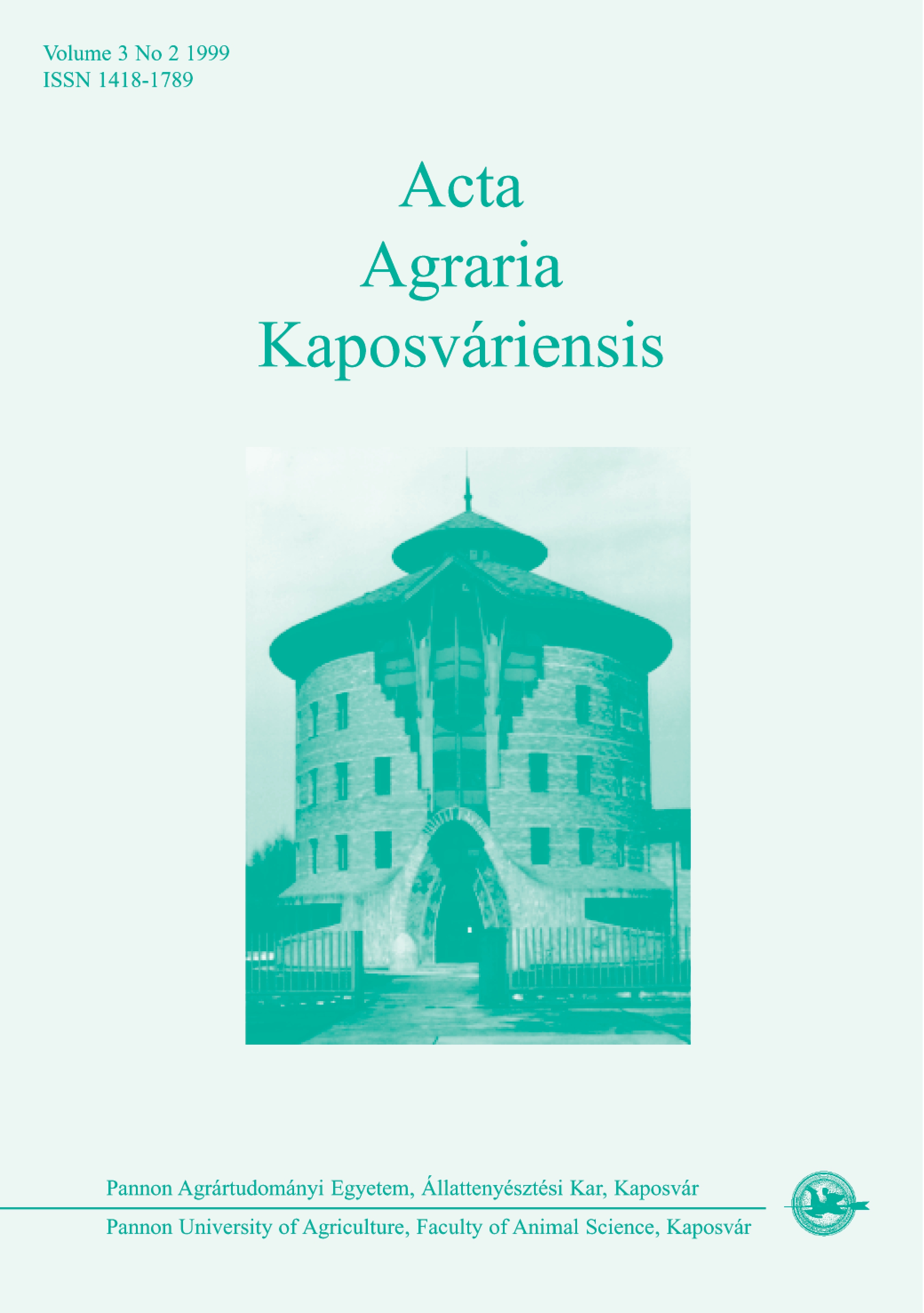Comparison of once-daily, free and combined forms of suckling in rabbits
Kulcsszavak:
suckling forms, rabbitAbsztrakt
These three experiments involved the investigation of various forms of suckling: free (F, n = 71 litters, 576 young), once daily (O, n = 68 litters, 543 young) and, in two experiments, combined suckling. In group F the does had free access to the litter throughout the entire day; in group O the does were allowed to suckle their young between 8.00 and 8.30 a.m. each day, but at all other times were separated from the litter; in group K, in the week following parturition free suckling was allowed for 7 days (expt. 2) or 4 days (expt. 3), subsequent to which the does were able to suckle their young only once daily until the 18th day. In experiments 1 and 2, in the week after kindling significantly lower mortality was observed in the young rabbits of group F
(F = 3.8 and 4.8%, 0 = 6.0 and 9.2%, for expts. 1 and 2 respectively); between the 7th and the 21st day the young of group O showed more favourable mortality figures
(F = 3.6 and 5.4%, 0 = 0.6 and 0.6%, for expts. 1 and 2 respectively). Mortality between days 0 and 21 proved lowest where the two forms of suckling were combined, in group K (expt. 2: F = 10.2%, 0 = 9.8%, K = 5.3%). Experiment 3 produced no clear-cut result (F = 7.5% >, 0 = 9.6%, K = 7.5%). Contradictory results were obtained within the groups with respect to primiparous (P) and multiparous (M) does. The highest mortality with P does was observed in group F, that with M does in group O
(P does: F = 12.2%, 0 = 6.4%, K = 8.3%; M does: F = 6.3%, 0 = 11.4%, K = 7.3%). Litter size at 21 days proved the highest in group K in experiment 2, but in the other experiments no difference attributable to form of suckling was ascertained. With respect to litter and individual weight at 21 days there emerged no difference of such a nature as to form the basis for the conclusion that the form of suckling used had influenced milk production in the does or the quantity of milk available per young rabbit. Although the majority of the results obtained confirm the advantages of combined suckling, due to divergent data in the literature and differences between younger and older does observed in experiments performed by the authors, it is not possible to offer a definitive recommendation with respect to the most favourable form of suckling.
Hivatkozások
Costantini, F., Panella, F., Castellini, C. (1986). Management of rabbit breeding. Rivista di Coniglicoltura, 23(2), 44–46.
Coureaud, G., Schaal, B., Orgeur, P., Coudert, P. (1998). Le controle de l’acces au nid chez la lapine: conséquences sur la mortalité des lapereaux. 7emes Journ. Rech. Cunicole Fr., Lyon, 245–249.
Lebas, F. (1969). Alimentation lactée et croissance pondérée du lapin avant sevrage. Ann. Zootech., 18(2), 197–208. https://doi.org/10.1051/animres:19690207
Mohamed, M. M. A., Szendrő, Zs. (1992). Studies on nursing and milk production of does, and milk intake and suckling behaviour of their kits. 5th World Rabbit Congress, Corvallis, 708–716.
Pizzi, F., Crimella, C. (1984). Controlled lactation in intensive rabbit breeding. Atti – della-Societa Italiana-delle-Scienze Veterinarie, 38. 504–507.
Pizzi, F., Crimella, C. (1985). Allattamento controlato in coniglicultura. Influenze sugli asorescimenti ed incidi conversione alimentara dallo svezzamento all eta di macellezione. Atti –della-Societa Italiana-delle-Scienze Veterinarie, 39(2), 467–470.
Szendrő, Zs., Benke, M. (1991). A házinyúl szoptatási és szopási viselkedésének vizsgálata. 3. Nyúltenyésztési Tudományos Nap. Kaposvár, 161–170.
Letöltések
Megjelent
Folyóirat szám
Rovat
License
Copyright (c) 1999 Zsolt Szendrő, Tünde Gyarmati, András Lévai, István Radnai, Edit Biróné Németh

This work is licensed under a Creative Commons Attribution-NonCommercial-NoDerivatives 4.0 International License.






